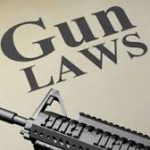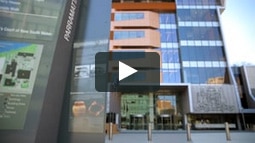Do we need to further tighten our gun laws?
In 1996, Martin Bryant walked into a cafe in Port Arthur, Tasmania and killed 35 people and wounded 23 others with a semiautomatic rifle and another semiautomatic assault weapon (Source: The Business Insider).
After the Port Arthur massacre, PM John Howard launched one of the biggest gun law reforms in the country with the National Firearms Agreement (NFA). The reform put in place tight controls on who could own a gun, what type of gun they could own, and what guns could be imported including the restriction of semi-automatic and automatic rifles and shotguns, as well as the banning of self-loading weapons. A national register of guns and gun owners was also set up.
Unlike in the US, the right to private gun ownership has never been guaranteed by any Bill of Rights or National Constitution in Australia and during the gun reform the NFA imposed that applicants for a gun licence had to have a criminal background check and show a “genuine reason” for owning a gun. Self-defense was not accepted as a valid reason.
During the gun reform an amnesty and buyback program resulted in initially 700,000 and rising to more than a million guns removed from the community. As a result of Howard’s strict gun reforms, the number of gun deaths dropped by half from 521 in 1996 to 289 in 2003, according to a 2006 study by the University of Sydney.
However, despite all of that, in 2014 a lone gunman killed 2 hostages and injured four others, including two pregnant women, in the Lindt café attack. Just over a year later a gunman shot three people in the siege at Ingleburn in Sydney.
Gunpolicy.org reports the total number of deaths in 2014 resulting from firearms in Australia was 230. That is higher than in 19 other countries, including the UK.
According to an investigation by the New Daily there were 3,463 firearm related charges in NSW in 2014-15, up 83 per cent from 2005-06. There was also a 49 per cent rise over four years in South Australia for possession and gun trafficking.
According to Associate Professor Philip Alpers a gun control researcher from Sydney University’s School of Public Health, Australia has around 3 million legally owned firearms in private hands, including some of the same types of guns used in past mass shootings.
More important though, is not how many guns we have in Australia, but who has the guns, how they are getting them and what they are doing with them. It is estimated that there are around 260,000 illegal guns in Australia and gun-related crime is rising in many parts of the nation.
Offenders are getting guns from a variety of sources, according to an article in the Guardian, including the black market where firearms have been either “illegally imported, illegally manufactured or transferred from the legal markets in some way, such as by theft.” It is also reported that there is a “grey market” where firearms that were not registered or surrendered under the NFA are also getting into the hands of offenders.
Gaps in our Gun Laws
Even though we have tough gun legislation there are meaningful gaps. For example, proof is not required for the “good reason” cited when applying for a gun licence. Wade Frankum who had never been known to hunt killed seven people and wounded six others during the 1991 Strathfield massacre. He ticked off “hunting” on his gun licence application. Also people have been granted a gun licence without having to wait for the required background check to clear.
Although the National Firearms Agreement (NFA) restricted semi-automatic and automatic rifles and shotguns, as well as banned self-loading weapons; an article in The Conversation points out that the worst mass shooting, which occurred even before Port Arthur, was committed with a “single shot” .22-calibre-bolt-action rifle not a semi-automatic weapon. This type of firearm is still commonly owned by farmers and other licensed shooters today. There is also a big debate going on right now about legalising the Adler A110, a high powered weapon that looks and operates like a semiautomatic.
Philip Alpers suggests the ban on semi-automatic weapons has only created criminal demand for other types of guns such as hand guns instead.
Detective Superintendent Mike Plotecki of the NSW firearms squad told the News Daily that he believes the spike in gun crimes recently is from an increase in illegally imported firearms. It appears that many of the shootings are linked to drug-trafficking networks or organised crime, and are acts of intimidation or reprisals from rival gang members or other criminal associates.







